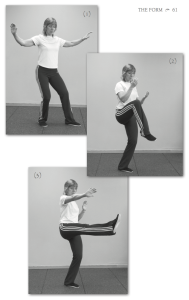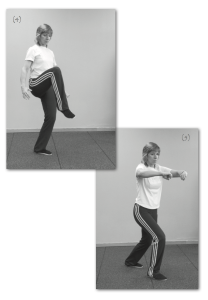The LFP Equation
Working in a gym allows me the opportunity to observe varied approaches to traditional exercises. I have learned a few positive techniques along the way and reaffirmed how much of my approach is functionally correct. In the upcoming columns, I will address several that have come under scrutiny. Some aspects of what I believe may challenge conventional wisdom. I hope to persuade using logic, explaining why certain modifications will enhance the results.
The Three Amigos
Let’s start with the muscle complex known as the deltoids. Many people know the name but you would be surprised how many are hard pressed to point them out on their body. This is a 3 muscle grouping: front (anterior), middle (medial) and rear (posterior). They encapsulate the shoulder. As part of educating your client, ask them to point out the deltoids. Then ask them how many muscle groups make up same. Every so often, ask the same two questions until they have it down cold.
As stated earlier, you will see all manner of techniques being performed on the deltoids. There are three basic lifts, the front raise, lateral raise and prone raise, all single joint movements, with the individual pivoting through their shoulder capsule. I will focus on these three using dumbbells. Realize you are requiring one muscle to do the vast majority of work, even though all three are in the mix. [You can see these lifts on YouTube: type in > BBSG LFP]
The Techniques
- The elbow should have a slight bend, held isometrically. One key is to not lock out the elbow since locking out increases stress on the joint and reduces control of the weight. A simple way to confirm this is to do a lateral raise with the elbow bent and, at the top of the lift, purposely lock out your elbow. Your body will tell you “it doesn’t feel right”.
- Proper breathing: Exhale when you are going up against gravity, the lift. Inhale when you lower the dumbbell. Your breathing will dictate your movement, a basic premise on resistance exercises in general.
- Do not lift the weight above parallel. Elevating the shoulder capsule any higher can increase the impingement factor, i.e. stress. In my opinion, there is no advantage to going higher.
- Control the weight: This is the most critical observation. Slinging the weight with acceleration is problematic. You are putting all the tension on a single joint. Would you do a bicep curl as fast as you could? You wouldn’t because you would feel uncomfortable pressure in the elbow.
- Control the weight: Come to a full stop at the top of the lift. I call them ‘snapshots’. If you can’t stop the momentum of the dumbbell, you have too much weight. You are no longer in charge. The dumbbell is. The only reason a person can do a lateral raise with 25 or 30 pound dumbbells is because of momentum. If you asked your client to lift that weight and then, stop it at the top, he or she probably couldn’t.
- Control the weight: The eccentric move is as important as the concentric move. If you can’t command the return of the dumbbell, you are setting yourself up for problems down the road. Why? The concentric move emphasizes a little more toward the muscles. The eccentric move tends to lean more in the direction of the tendons. Without controlling both up and down, you are setting up an imbalance in the muscle/tendon complex.
- Place this exercise at the end of the workout. Why?
(1) If you perform the LFPs in the beginning, you will have pre-fatigued the deltoids. Now, when you follow with an upper body multi-joint exercise, the number of repetitions will be reduced. Try doing a couple of sets of front raises, then see how it impacts the number of pushups which can be generated. Remember, to change a client’s body composition, multi-joint/multi-muscle resistance moves are far and away superior to single joint efforts.
(2) Doing the multi-joint first warms up the deltoids. They will be better prepared. Doing a single joint when the muscle fibers are cold is more stressful.
My Philosophy
Single joint actions are not designed for heavy lifting. Their purpose is to bring more definition. In some circles they are called ‘vanity lifts’. They are also not functional. You would never bring in your groceries using a lateral raise or lift your garbage using a front raise.
I believe you will get better definition because the muscle has to stop the weight, isometrically hold it in position for a moment in time, then direct its return. I could call it a ‘compression factor’. Seems to me the muscle has the potential to become more compact.
This ‘compression factor’ carries over to other lifting moves. Control is a key. I also incorporate this with upright rows, seated rows, bent over rows, pull ups, lat pulldowns and triceps press downs. Lifting for a number instead of focusing on technique is setting you up for a potential setback, particularly when applied to us baby boomers. Never look like you at war with the weights.
Your Audience
One of the concerns with the seniors is they don’t want to get hurt. It is a major reason for their reluctance to start working out in the first place. Being in command from start to finish does several things.
- They will have better focus
- They will feel they are in more control
- They will be more aware of which muscles are doing the work
- The chance for injury is reduced, particularly when it comes to the over 50 crowd
Keep in mind you are constantly establishing a level of trust. Your client does exactly what you tell them to do each and every workout because of the belief they have in you. As a result, you want that confidence to grow so your business will grow as well.
Good Luck and Good Health!
Rick Almand
ACE and AFAA Certified
BabyBoomersSurvivalGuide.net
1st Dan 2nd Stripe Tae Kwon Do
|
“You’ve got to jump off cliffs all the time and build your wings on the way down”
|




 How can you possibly apply this to your client’s everyday life? Hopefully, they are not fighting someone where they need to kick them and then box their ears!
How can you possibly apply this to your client’s everyday life? Hopefully, they are not fighting someone where they need to kick them and then box their ears!
